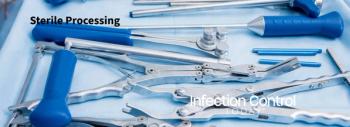
Hardware: Return to Sender?
Question: I work for a multi-disciplinary ambulatory surgery center in northern Minnesota and I was wondering about hardware removals. To date, we handwash the hardware (pins, screws etc.) peel-pack, and steam sterilize for 4 minutes. Personally, IÂ have never been a fan of returning surgical hardware to the patient. I guess I'm wondering if there is a national protocol for hardware removals? Any thoughts would be greatly appreciated. JM, Duluth, Minn.
Answer: A very good question. There is no written standard but there are policies in many hospitals concerning implantable devices or body parts that patients feel a special attachment to or would like to keep as mementos as such. Let us take a look at a few things:
 1. Most insurance claims for removed devices or body parts require pathology proof before payment can be coded as a removal of said items. The patient, in the case of devices, did pay for the original device; however, if the patient persist and wants the old devices removed for use as a keepsake, here are some suggestions from my colleges:
a) Suggest the surgeon sign the chart as he/she is taking the devices with intent to return to the patient and assumes responsibility for such items.Â
b) Have pathology return the devices after verifying them as such to the operating room for eventual return to the patient via their attending surgeon.  Â
 c) Make sure there is written waivers for such a practice and make sure that your lot numbers are well recorded, if applicable. You must have full cooperation from your surgeon. Is he/she willing to hold that liability if there is any?Â
 Medical devices removed from the body being given back to the patient per their request via the attending surgeon must be cleaned, disinfected, and sent through a sterilization process and contained in a peel pouch or similar containment device (sterile specimen container if that applies) before being returned. In this case, you are doing a good job.
 In cases of body parts -- This is pretty rare except in the few and far between interest in keeping a gallstone or two for the mantel, post-cholecyctectmy. Even this is strongly discouraged and for the most part well understood by the patient who has an interest. Just be aware there are some who will insist. If so, unless otherwise contraindicated, the part does belong to them. For example, there are some religious groups that wish to have all removed parts stored in a post-mortem vault so it may be buried with them upon their death. It seems strange that a person would want these kinds of things, but there is no law saying they can't have the hardware they purchased if they want it. Just make sure you have a paper trail consistent with your facilitys legal protocols for such a potential liability and full physician support. Its a good question, and Im glad you asked. This made some of my colleges take a good look at the issue, too. Your question helped us all.
Â
Newsletter
Stay prepared and protected with Infection Control Today's newsletter, delivering essential updates, best practices, and expert insights for infection preventionists.






